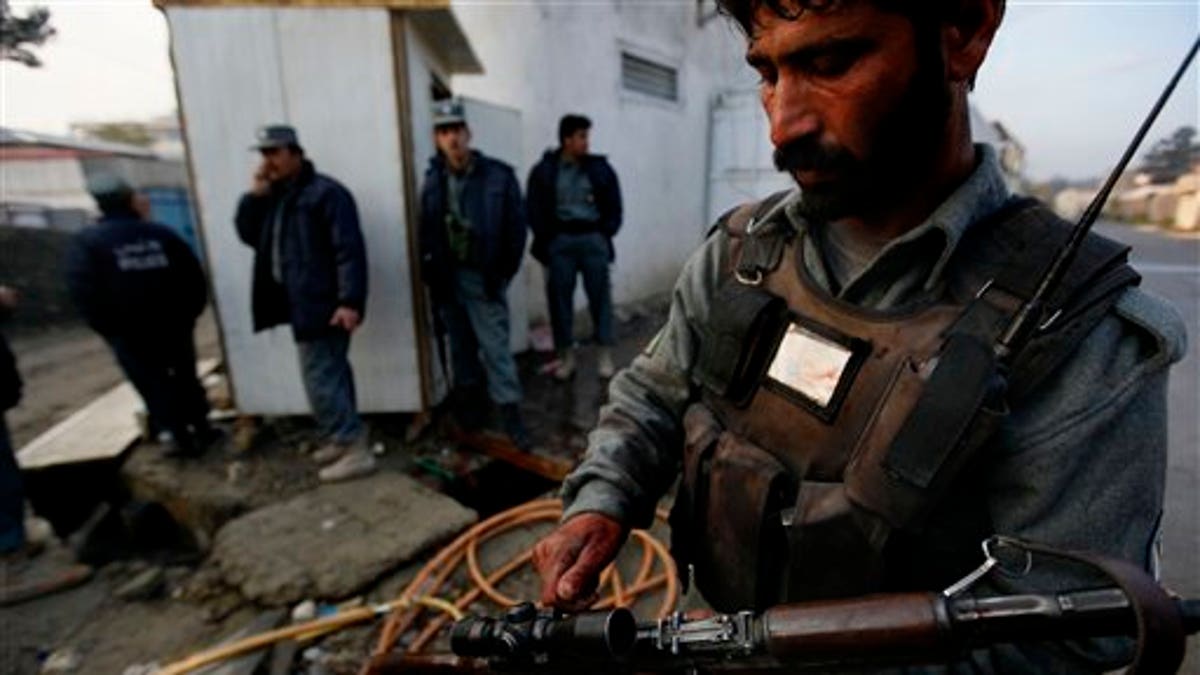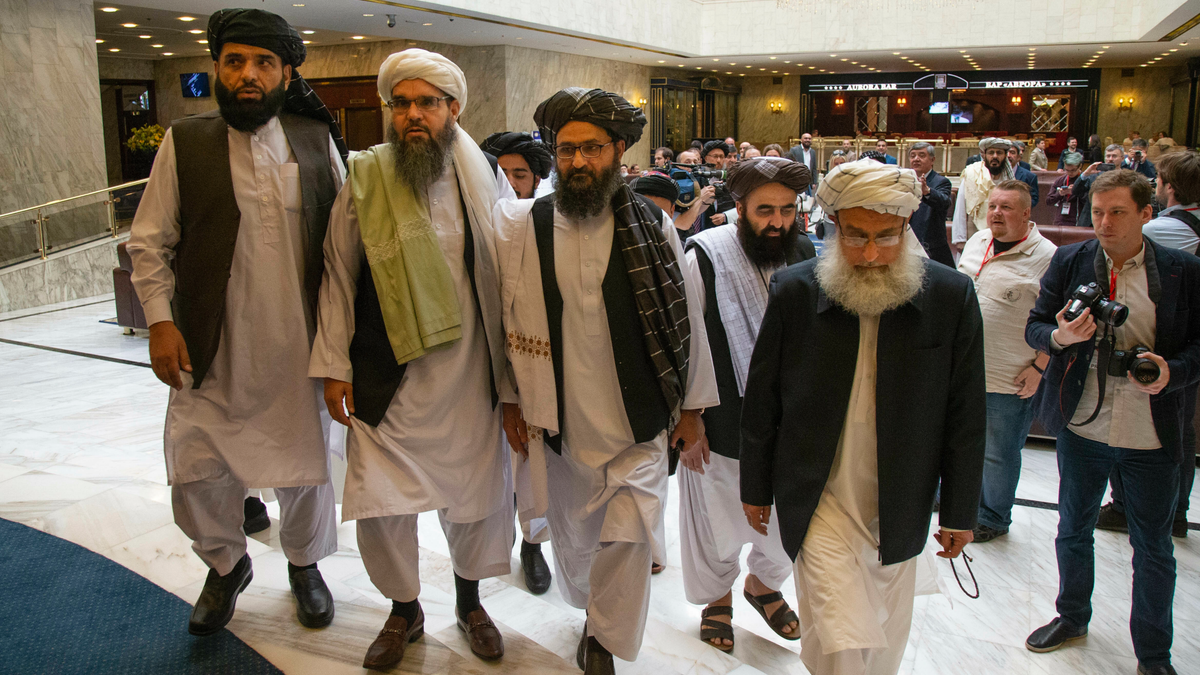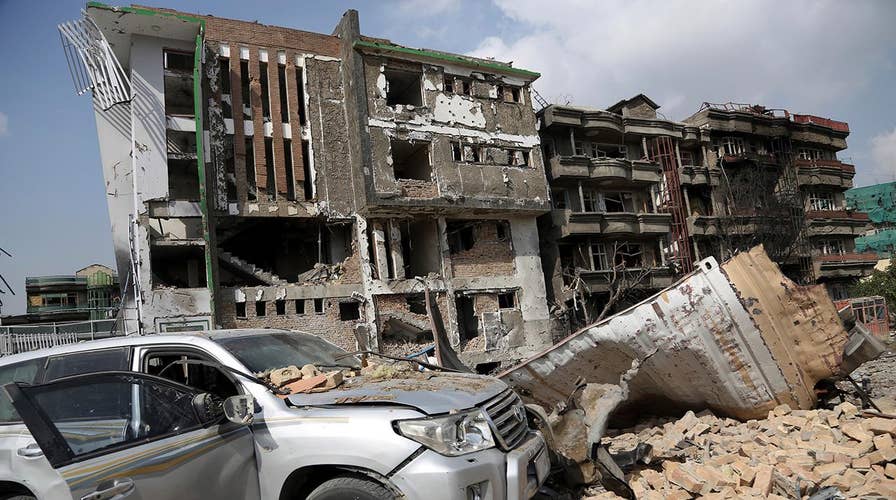As the United States and the Taliban edge closer to inking a “peace deal” – having reportedly ironed out discrepancies over the U.S pullout from Afghanistan and an agreement not to allow the conflict-laden country to become another terrorist sanctuary – the insurgency outfit has continued its dominance, daily attacks and bloodletting unabated.
Over the past 18 years, the Taliban has managed to maintain significant land control and cause mass carnage in the protracted war – of which more than 2,300 U.S. servicemen and women have lost their lives and cost the American taxpayer an average of $45 billion per year, according to the Department of Defense.
So how is it that a hardline political party with a traditionally rugged mountain militia wing has managed to stay to resilient for so long?
“The Taliban have become a force to be reckoned with, in the political sphere – and the West concedes they are here to stay,” Raphael Gluck, co-founder of the jihadist monitoring firm Jihadoscope, told Fox News. “They have gained lots of goodwill from the West and legitimacy – which like it or not, sees them controlling half of the country. The fact that after 18 years, the U.S. is looking to scale down while the Taliban remains, says it all.”
AFGHAN WOMEN FEAR RENEWED CHAPTER OF SHARIA LAW AND REGRESSION OF RIGHTS UNDER TALIBAN’S THUMB
Throughout the last week in July, according to figures compiled by the New York Times Afghan Casualty Report, more than 55 pro-government forces and 54 civilians lost their lives in the mayhem, with one Taliban attack alone in Takhar Province killing 24 soldiers and 13 police officers.
The U.N. Assistance Mission to Afghanistan documented that some 3,812 civilians had been killed or wounded in just the first half of 2019 and that 2018 had been the most lethal year of all – more than 3800 dead, more than 7000 severely hurt.
Gluck also pointed out that, at times, “the Taliban is fighting the U.S. and U.S. interests… with U.S weapons.”
“This is happening in part because weapons are leaking from the Afghan military to the Taliban,” he noted, explaining that a popular technique in Taliban messenger circles is to share photographs and tips with regards to them seizing weapons from the Afghan Army, largely funded by the United States.
As for that weapons cache, analysts surmise it’s a growing arsenal with an international flair.
“The Taliban obtains weapons from multiple sources – from raids against Afghan military and police bases and outposts; weapons provided by Pakistan, Iran, and in some cases Russia; and in some instance from Afghan forces that defect or secretly provide equipment from Afghan stockpiles,” said Bill Roggio, a Senior Fellow at the Foundation for Defense of Democracies (FDD) and editor of FDD’s Long War Journal. “The weapons are on par with what the Afghan military is using. The more sophisticated items like night vision devices or US HUMVEEs are obtained during raids on Afghan bases or when elite units like Afghan Commandos are defeated in the field.”
Defense Priorities fellow Gil Barndollar concurred that Afghanistan is awash in weapons.
“Taliban fighters wield everything from century-old British Lee-Enfield rifles – which can still be very effective – to recent-model rocket-propelled grenades. Weapons flow in from the six countries that border Afghanistan, Pakistan most of all, he asserted. “Many weapons and devices are also acquired from U.S.-supplied Afghan security forces. Some elite Taliban units now boast night vision goggles (NVGs), mostly stolen or taken from defeated Afghan soldiers.”
But of particular prominence for the Taliban is the Improvised Explosive Device (IED).
“This has been a game-changing weapon in Afghanistan. IED know-how, both tactical and technical, migrated from Iraq to Afghanistan with great speed. IEDs have caused 55 percent of U.S. combat deaths in Afghanistan,” he added. “Afghan IEDs made with homemade explosives are also generally far larger than the military-grade IEDs employed by insurgents in Iraq. Despite tens of billions of dollars spent on counter-IED technology and tactics – the U.S. has not really solved the riddle of the IED. The human eyeball still remains the best detection device.”

A popular technique in Taliban messenger circles is to share photographs and tips with regards to them seizing weapons from the Afghan Army, largely funded by the United States. (AP)
The Taliban’s resilience also stems from decades of experience in the theater of war and deep knowledge of the rugged terrain – cemented with U.S. support dating back to the Soviet Invasion of the 1980s and an ancient warrior culture.
At this point, it has become a survival of the fittest.
“’Combat Darwinism’ is in effect," Barndollar said. "The Taliban who have survived this long have learned to avoid and mitigate key U.S. military advantages. Chief among these are U.S. intelligence, surveillance, and reconnaissance (ISR) assets and U.S. precision strike capabilities.
“The Taliban counter these advantages through dispersion and hiding among the people. They have learned to ‘shoot and scoot,’ leaving the scene of an attack before overwhelming U.S. firepower can be employed. U.S. mobility is mitigated through IEDs, especially on choke points and the limited roads that exist.”
INSIDE DEADLIEST TALIBAN ATTACK AGAINST AFGHAN TROOPS
They are experts at blending in among civilians, rendering it almost futile for Afghan troops to differentiate them from the throngs of people. Then there is the persistent rash of deadly “insider” attacks infiltrating Afghan forces, either posing as soldiers or recruiting those already in the ranks and targeted assassinations of key nemesis figures.
Moreover, analysts contend finances and operations now extend far beyond the battlefield.
“Today, the Taliban pursue a variety of activities to keep the fight going, from criminal enterprises to trafficking. The Taliban have the means to exercise local governance, levy taxes, enforce their laws, and recruit new members in areas where they enjoy a strong presence,” said Miguel Miranda, an Asia-based arms and security expert. “And what is often unrecognized is the Taliban have an effective spy apparatus and the means to infiltrate and compromise the government's best efforts at security. The Taliban have a talent for exploiting weaknesses.”
And it remains factually murky as to exactly what the U.S. and its allies are dealing with on the combat-corrupted ground, Miranda indicated.
“Almost 18 years later and there is still conflicting intelligence on the Taliban’s inner workings. The Afghan government and the DOD can’t reach a consensus on how many Taliban fighters there are, from a low of 30,000 to a high of 100,000,” he said.

Mullah Abdul Ghani Baradar, the Taliban group's top political leader, third from left, arrives with other members of the Taliban delegation for talks in Moscow, Russia, Tuesday, May 28, 2019. Baradar and a team of 14 Taliban are in Moscow where they are scheduled to meet other Afghans including former President Hamid Karzai and some of the candidates in the presidential elections. (AP)
Meanwhile, Zalmay Khalilzad, the Afghanistan-born, U.S. peace envoy has stated that he is optimistic a final accord will be drawn up by September 1 with which around 70 percent of the 20,000 NATO forces – 14,000 of whom are Americans – would then leave the country.
Whether the world’s most powerful military lost to the Taliban it so quickly and victoriously usurped from the throne in the immediate months after the September 11 attacks, may end up a matter of interpretation. But according to Roggio, there is little doubt that the U.S. hands were too tied up for too long against an antagonist untethered by international laws and conventions.
“The rules of engagement have failed the U.S on many levels. The restrictive rules have often allowed Taliban forces and support personnel to escape capture or death due to a fear of destroying property or causing civilian casualties,” he added. “These rules have allowed thousands of Taliban fighters and commanders to live to fight another day, and inflict pain, death, and destruction on thousands of Afghans and Coalition troops.”


